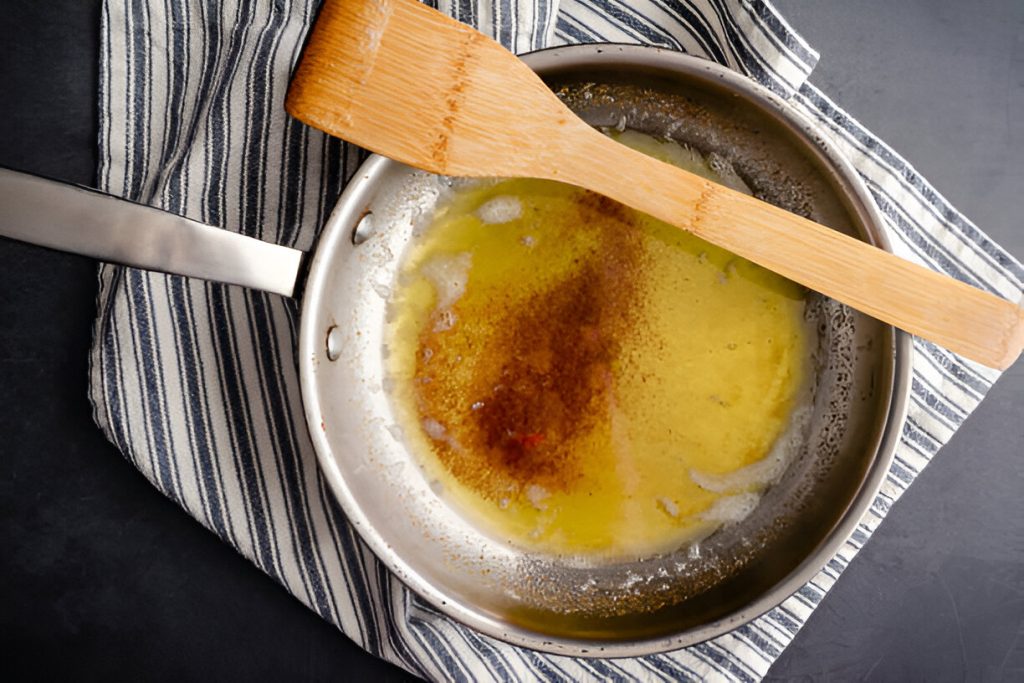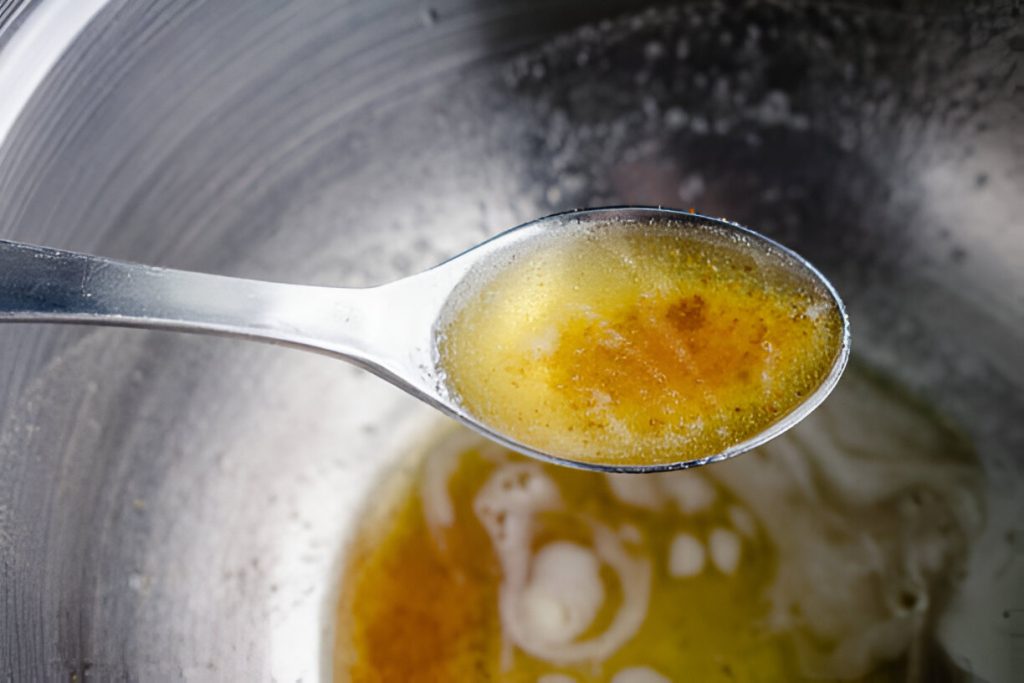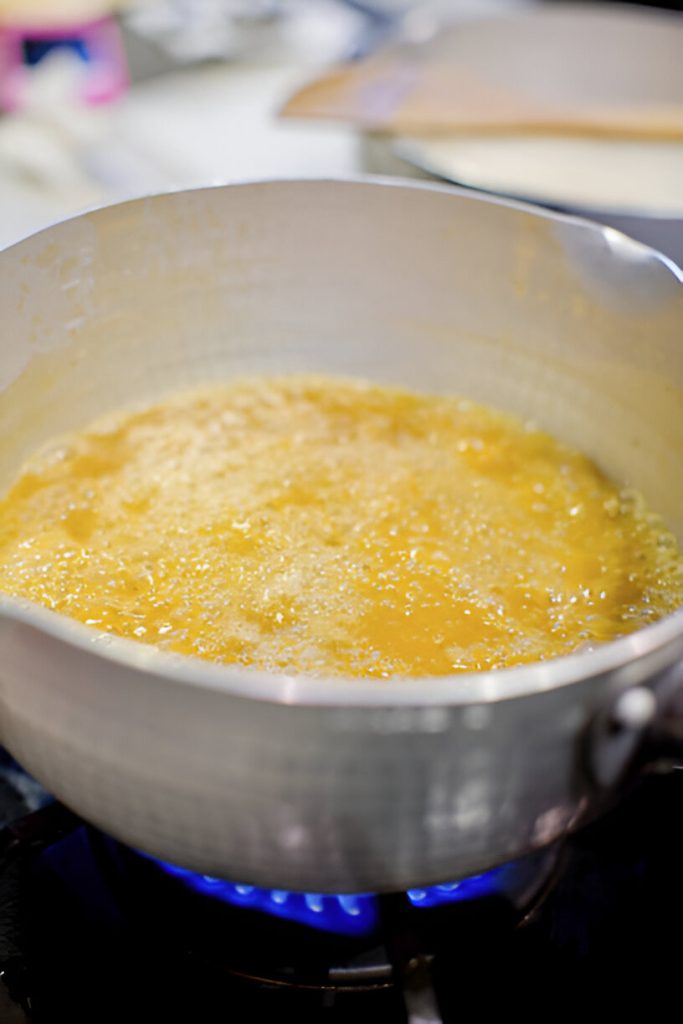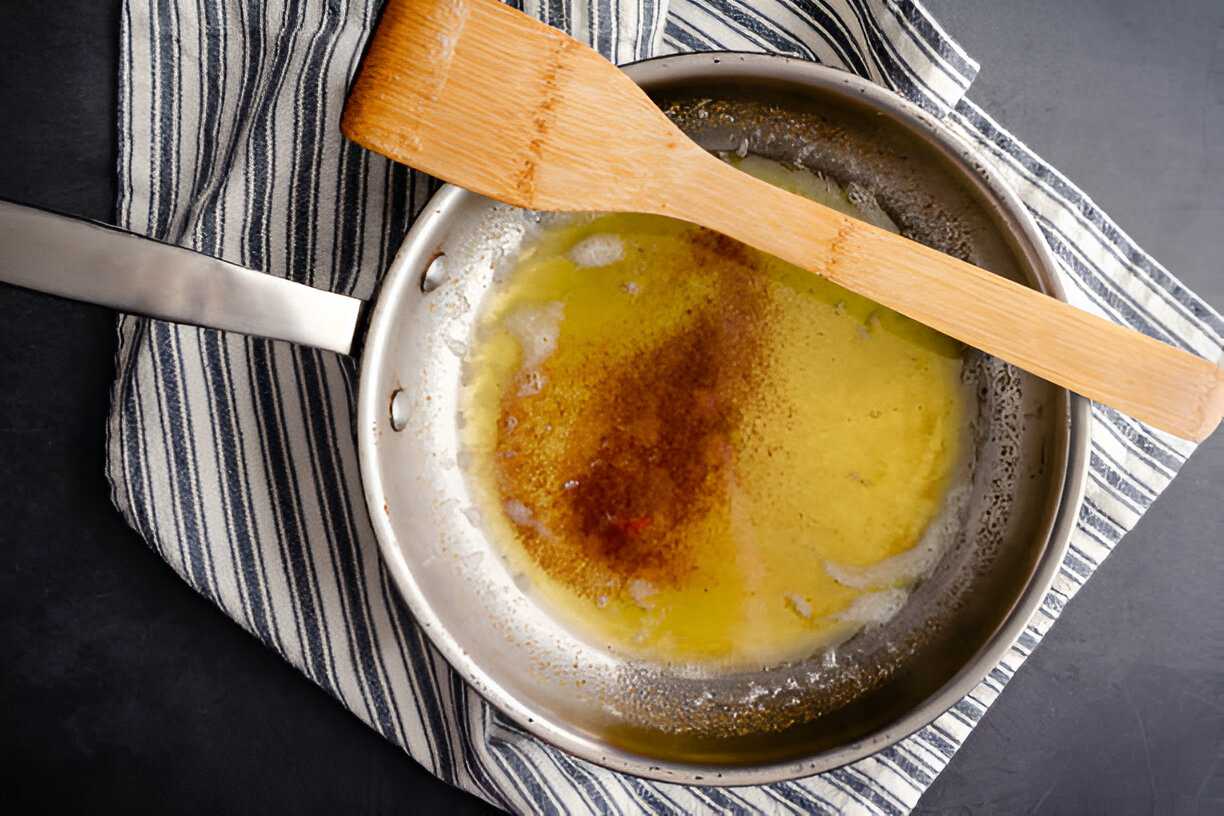Brown Butter Recipe
Brown butter, with its rich, nutty aroma and deep golden hue, transforms any dish into an elevated culinary experience. Its distinct taste adds complexity and warmth, making it a popular choice for enhancing both sweet and savory recipes. From baking to sauces, brown butter’s versatility makes it an essential addition to any cook’s repertoire. This guide will walk you through crafting the perfect brown butter, while also providing insights into its uses and storage.

Ingredients Overview
This recipe requires only one ingredient: a stick of unsalted butter. The beauty of brown butter lies in its simplicity; it’s proof that sometimes the best flavors come from the most basic ingredients. Unsalted butter is ideal here, as it gives full control over the seasoning. When carefully browned, butter’s naturally rich flavor intensifies, becoming more complex and bringing a nutty depth that enhances a variety of dishes.
Step-by-Step Instructions
Step 1: Melt the Butter
Begin by placing a sturdy, thick-bottomed skillet over medium heat. Add the butter directly to the pan. For an even melt, slice the butter into smaller pieces before heating. Stir gently and consistently to help it melt smoothly and prevent uneven cooking.
Step 2: Monitor for Browning
Once the butter has fully melted, you’ll notice it foaming up, a sign of the water content evaporating. As it settles down, keep a close eye on the pan. The color will start shifting, and tiny brown flecks will appear at the bottom. At this stage, a nutty, warm aroma will arise—a signal that the butter is reaching its perfect state.
Step 3: Remove and Cool
When the butter turns a light golden brown with visible brown specks, immediately remove the skillet from heat. Pour it carefully into a bowl to halt further cooking, as the residual heat in the pan can quickly push it from brown to burnt. Moving the butter into a bowl not only stops the cooking process but also preserves its nutty, delicate flavor.

Recipe Tips
Choosing the Right Pan
A heavy-bottomed skillet is your best choice for browning butter evenly, as it prevents hotspots that can cause uneven browning or burning. Avoid nonstick pans if possible, as they may prevent proper browning.
Controlling the Heat
Maintaining medium heat allows for better control over the butter’s cooking process. High heat can cause the butter to burn before it has the chance to properly brown. Adjusting to a medium-low setting if it seems to brown too quickly is recommended.
Smell and Visual Clues
Let your senses guide you. As the butter heats, focus on both aroma and color changes. When it shifts from a soft yellow to a golden brown and releases a warm, nutty fragrance, it’s ready. This combination of color and scent is the best indicator of perfect brown butter.
What to Serve with This Recipe
In Baked Goods
Brown butter is a powerful addition to baked goods, imparting a unique richness and nutty flavor. Try incorporating it into cookies, cakes, or muffins, where it adds an extra layer of flavor that elevates traditional recipes.
As a Sauce Base
Use brown butter as a base for sauces to drizzle over pasta, roasted vegetables, or meats. Its warm flavor pairs wonderfully with dishes like butternut squash ravioli or grilled asparagus, adding a gourmet touch to any meal.
In Savory Dishes
For a luxurious touch, add brown butter to mashed potatoes, risottos, or hearty grain bowls. Its depth complements the creamy, comforting textures, transforming these sides into something extraordinary.
Frequently Asked Questions
Can I Use Salted Butter?
Unsalted butter is generally preferred to give more control over the flavor. However, if you only have salted butter, adjust the seasoning accordingly to avoid overpowering the natural taste of browned butter.
How Do I Know When It’s Done?
Watch for the combination of a golden color and nutty aroma. The appearance of brown flecks and a rich, caramel-like scent indicate the perfect doneness for brown butter.
Can I Make It Ahead of Time?
Yes, brown butter can be made ahead and stored. Keep it in the refrigerator in an airtight container for up to a week. Reheat it gently before use, taking care not to overheat, as it can change the flavor.
How to Store and Reheat Brown Butter
Storage Tips
Store brown butter in an airtight container in the refrigerator, where it will remain fresh for up to a week. If you’d like to keep it longer, transfer it to the freezer for up to three months. Frozen brown butter can be portioned into cubes for easy use in various recipes.
Reheating Tips
When reheating, use low heat to prevent it from scorching. Melt it slowly in a pan, just until it reaches the desired liquid consistency. Avoid high temperatures that could compromise the nutty flavor you worked to achieve.
Creative Ways to Use Leftover Brown Butter
In Breakfast Recipes
Brown butter is a delightful addition to pancakes, waffles, and oatmeal. Swirl a bit into your batter or drizzle over hot pancakes for a warm, toasty twist on breakfast classics.
As a Spread
Whip brown butter with honey or fresh herbs for a unique spread that’s perfect on toast, bagels, or even savory scones. This adds both sweetness and complexity to your breakfast or snack.
Brown butter is a simple yet transformative ingredient, adding depth and warmth to an array of dishes. Whether enhancing baked goods, enriching sauces, or lending its unique flavor to savory meals, it’s a versatile staple for any kitchen. Easy to make, with endless uses, brown butter offers a touch of indulgence that elevates everyday meals into something memorable.

Ingredients
1 stick Unsalted butter (113g or 8 tablespoons)
Instructions
Melt the butter: Place a sturdy skillet over medium heat and add the butter. For a more even melt, try slicing the butter into smaller pieces. Stir it continuously as it melts, and let it cook steadily.
Look for brown flecks and a rich, nutty aroma: Once the butter is fully melted, it will foam briefly before calming down. Keep a close eye on the bottom of the pan as small brown specks start appearing. At this point, the butter should release a warm, nutty scent—this is a sign it’s transforming into browned butter.
Take it off the heat: Carefully pour the browned butter into a bowl to halt the cooking process and prevent it from going too far and burning.
Be cautious, as browned butter can quickly go from golden brown to burnt. If it starts to turn black, it’s best to discard it and start fresh (a mistake even experienced cooks occasionally make). Burnt butter, known as beurre noir, has a distinctly different flavor from the toasty, nutty notes of browned butter.
Use your browned butter right away, or store it in a covered container in the refrigerator for up to one week.

Brown Butter Recipe
Ingredients
- 1 stick Unsalted butter 113g or 8 tablespoons
Instructions
- Melt the butter: Place a sturdy skillet over medium heat and add the butter. For a more even melt, try slicing the butter into smaller pieces. Stir it continuously as it melts, and let it cook steadily.
- Look for brown flecks and a rich, nutty aroma: Once the butter is fully melted, it will foam briefly before calming down. Keep a close eye on the bottom of the pan as small brown specks start appearing. At this point, the butter should release a warm, nutty scent—this is a sign it’s transforming into browned butter.
- Take it off the heat: Carefully pour the browned butter into a bowl to halt the cooking process and prevent it from going too far and burning.
- Be cautious, as browned butter can quickly go from golden brown to burnt. If it starts to turn black, it’s best to discard it and start fresh (a mistake even experienced cooks occasionally make). Burnt butter, known as beurre noir, has a distinctly different flavor from the toasty, nutty notes of browned butter.
- Use your browned butter right away, or store it in a covered container in the refrigerator for up to one week.

